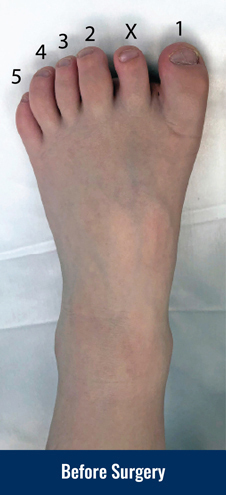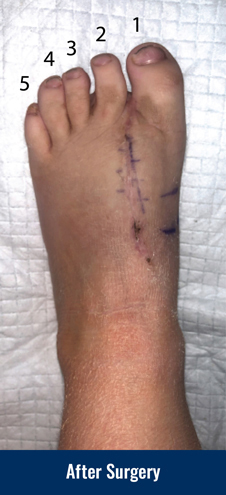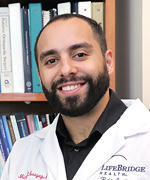Polydactyly
What is polydactyly?
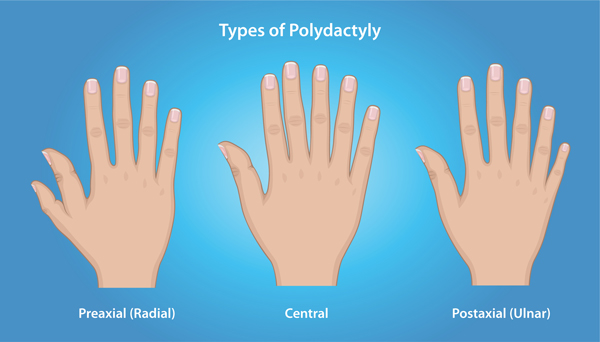
Polydactyly is a congenital (present from birth) deformity where there are more digits (fingers or toes) than normal (greater than five). Duplication can occur to any digit of the hand or foot. When there is duplication of the thumb or great toe, the deformity is known as a “pre-axial” polydactyly. When there is duplication of the pinky finger or small toe, the deformity is known as “post-axial” polydactyly. Duplication of the remaining digits is known as “central” polydactyly. Polydactyly can occur as an isolated condition or in association with a particular genetic syndrome.
Associated Genetic Syndromes:
- Bardet-Biedl syndrome
- Meckel syndrome
- Short rib-polydactyly syndrome
- Tibial Hemimelia
Duplication can occur in the bones and soft tissue or just soft tissue alone. The extra digit may be well developed and functional. Alternatively, it may be small, underdeveloped and nonfunctional. Your surgeon will evaluate functionality, soft tissue and bony involvement and decide together with you what the best treatment options may be.
What causes polydactyly?
Polydactyly appears in the fetus from day 28 to 53 of pregnancy. It is during this time when most skeletal malformations arise. The majority of the time, polydactyly is caused by unknown reasons. Additional causes of malformations may be linked to genetic defects or inheritance from family. It is very common for an extra little toe or little finger to appear in multi-generations of certain families.
How common is polydactyly?
Polydactyly of the hand is the most common congenital deformity. Of all types, pre-axial (inner border of hand) is most commonly identified in Caucasian, American Indian, and Asian populations and is as common as 1 in every 3000 births. Post-axial polydactyly (outer border of hand) is more commonly identified in the African American population with prevalence as high as 1 in every 1000 births. Central polydactyly is least common (5-15%) and will often present with two phalanges partially or completely united digits (also known as syndactyly or “webbed” digits).
In the foot, polydactyly is the most common congenital deformity. Its incidence is approximately 2 in every 1,000 births. Post-axial duplication (fifth digit) is most commonly encountered, 75-85% of the time. Bilateral (in both hands or in both feet) involvement occurs 50% of the time, and concomitant hand and foot polydactyly occurs 34% of the time.
How is polydactyly diagnosed?
Polydactyly is diagnosed at birth by the appearance of the hand/foot. Sometimes these are detected before birth by ultrasound anatomic surveys. After birth, your doctor may request X-rays to help determine which digit is the least functional and if surgery is necessary or desired.
Can polydactyly be treated non-operatively?
There are no non-operative treatment options for the hand. Non-operative treatment for the foot consists of wearing wider shoe gear to avoid excessive pressure over the digits; however, this condition is commonly treated surgically at a young age.
When is polydactyly surgery a good option?
Surgical management is indicated most commonly for a more aesthetic hand and improvement of functionality. Reconstruction of the hand/foot or removal of the extra digit is most commonly recommended around 12 months of age for several reasons. Waiting until 12 months reduces anesthesia risk and the digits are larger allowing for more precise reconstruction. This age is also prior to major functional developments and before the condition might cause social concerns.
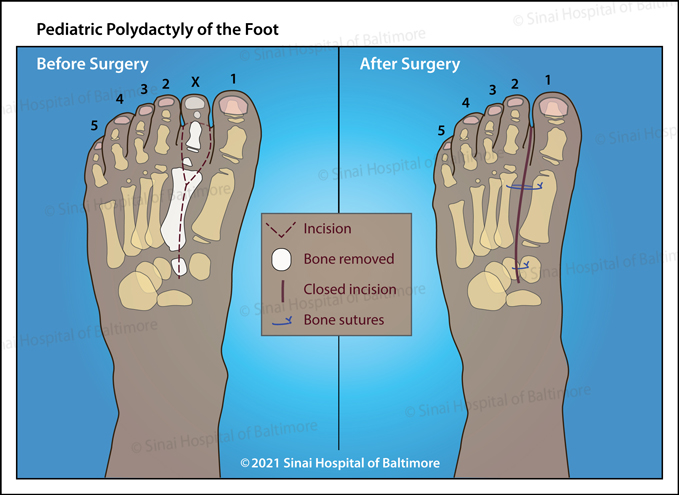 Before: The abnormal sixth extra toe is labelled “X” and shown in white. It includes not only the toe, but also an extra metatarsal and cuneiform bone. After: The abnormal toe has been completely removed. To decrease the abnormal space left after toe removal, sutures are used to bring the normal first and second toes closer together.
Before: The abnormal sixth extra toe is labelled “X” and shown in white. It includes not only the toe, but also an extra metatarsal and cuneiform bone. After: The abnormal toe has been completely removed. To decrease the abnormal space left after toe removal, sutures are used to bring the normal first and second toes closer together.What are the treatment options for polydactyly?
Surgical management depends on the extent of bony duplication and soft tissue structures. Your surgeon will evaluate the hand/foot both clinically and by X-ray to decide which finger/toe should be removed based on functionality.
Treatment options:
- Ligation of soft tissue resulting in auto-amputation (often done in the newborn nursery)
- Surgical excision of extra bone and soft tissue with reconstruction of the skin
Why choose the International Center for Limb Lengthening for treatment of polydactyly?
Deformity correction can be a complex process. Your doctor at the International Center for Limb Lengthening will take the time to make sure you understand all of your options and then will customize your treatment to meet your specific needs. If a patient has extra toes, the International Center for Limb Lengthening’s foot and ankle surgeons offer our patients the most comprehensive treatment possible as our doctors approach these problems from both a podiatric and orthopedic perspective. With a collective experience of over thirty years of helping patients with lower leg, foot and ankle problems, the Foot and Ankle Service of the Rubin Institute is one of the leading treatment centers for foot and ankle conditions in the United States. Patients with extra fingers and/or toes benefit from our team-centered approach with world-renowned surgeons and specialized physician assistants, nurses and physical therapists. We help patients with polydactyly achieve their best possible result.
